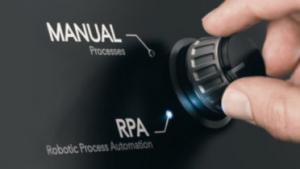What is Robotic Process Automation (RPA)?
What is Robotic Process Automation (RPA)?
RPA software ‘robots’ perform routine business processes by mimicking the way that people interact with applications on a computer and following simple rules to make decisions. Entire end-to-end processes can be performed by software robots with very little human interaction, except to typically manage exceptions.
Each instance of a robot (or 'bot') has its own virtual workstation, much like a human worker. The robot uses keyboard and mouse controls to take action and execute automations. Normally all of these actions take place in a virtual environment and not on screen; the robot does not need a physical screen to operate, rather it interprets the screen display electronically.
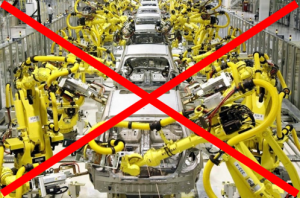
RPA robots are not physical robots like the ones in a factory building cars.
They are like a virtual member of staff with their own system logins, that can do all the tasks in your systems but 24/7, with no coffee breaks.

What processes are suitable to deploy with RPA?
What processes are suitable to deploy with RPA?
RPA tools are best suited for processes with repeatable, predictable interactions with IT applications. These processes typically lack the scale or value to warrant automation via core systems transformation or if core systems transformation is not due to be implemented soon. RPA tools can improve the efficiency of these processes and the effectiveness of services without changing the underlining systems.
Factors to consider when selecting which processes are suitable for RPA may include those that are:
Repetitive
Prone to error
Rules-based
Involve digital data
Time-critical and seasonal
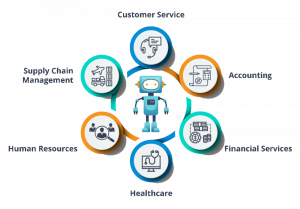
Why use Robotic Process Automation?
Why use Robotic Process Automation?
The benefits of RPA solutions go beyond cost reduction and include:
Decreased cycle times and improved throughput
Flexibility and scalability
Improved accuracy
Improved employee morale – enables them to add more value
Allows time to innovate and focus on customer satisfaction
Detailed data capture.
The price of development and deployment of RPA is very much lower than making changes to your main systems which gives a much greater return on investment. The times to deploy RPA are much shorter; days or weeks rather than months or years. There is also much more control and flexibility as control can be in the hands of the users or IT managers hands, you decide.
Who are the main suppliers of RPA technology?
Who are the main suppliers of RPA technology?
There are three main suppliers, with many others joining the fray all the time.
(Courtesy: Forrester Wave TM Q4 2019)
UiPath
BluePrism
Automation Anywhere
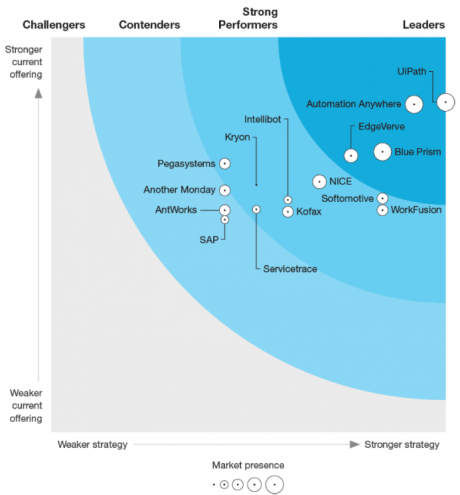
Automation Anywhere is more script-based, while UIPath and BluePrism have visual process designers. This means you need to have better programming skills to use Automation Anywhere.
Automation Anywhere and UiPath have Macro Recorders, a feature that will get you up to speed in process mapping, while BluePrism lacks this feature, due to their rather outdated technology.
Besides these, there are specific differences when it comes to automation techniques. You need to consider your process and the steps taken to automate it. UiPath Robotic Process Automation shines in Citrix and was specifically designed for BPO Automation, based on client insights.
From Cognitive Capability and Re-usability point of view Automation Anywhere leads the way.
Client-server architecture is much better with Blue Prism.
What is the future of RPA?
What is the future of RPA?
Intelligent Process Automation (IPA) or popularly known as Intelligent Automation is an advanced form of RPA. Intelligent Automation combines RPA with other technologies such as:
Structured Data Interaction (SDI)
Machine Learning (ML)
Natural Language Processing (NLP)
Natural Language Generation (NLG)
AI-Decision systems
Chatbots and more
This is helping businesses to automate processes more efficiently and effectively than RPA.
The main focus is to deliver meaningful and intelligent outputs. Unlike RPA, intelligent automation can efficiently process unstructured data, with better exception handling and continuously learn. It offers better cost reductions compared to RPA.
For note, the ratio of Robots to Humans is a measure of how far an organisation has embraced RPA. A recent survey shows companies Robot: Humans ratio is:
8% are 1:1
64% less than 1:1
28% are zero
Some examples of RPA projects Implement has delivered
Some examples of RPA projects Implement has delivered
We applied both RPA and automation to enable our client to check compliance to sales processes more quickly and with significantly less human resource.
Click here to read the full case study.
Working in partnership with Lean Consulting.

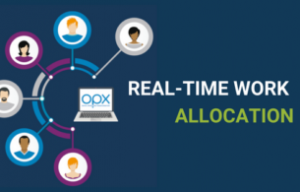
We created a Bot that had the flexibility to manage the allocation of work across many departments, from the call centre to underwriting and claims processing, taking into account availability, technical competencies and existing workload.
Click here to read the full story.
Working in partnership with Lean Consulting.
For more information or to book your exploratory consultation please call us on 020 7739 6565 or email admin@implementconsultancy.com
